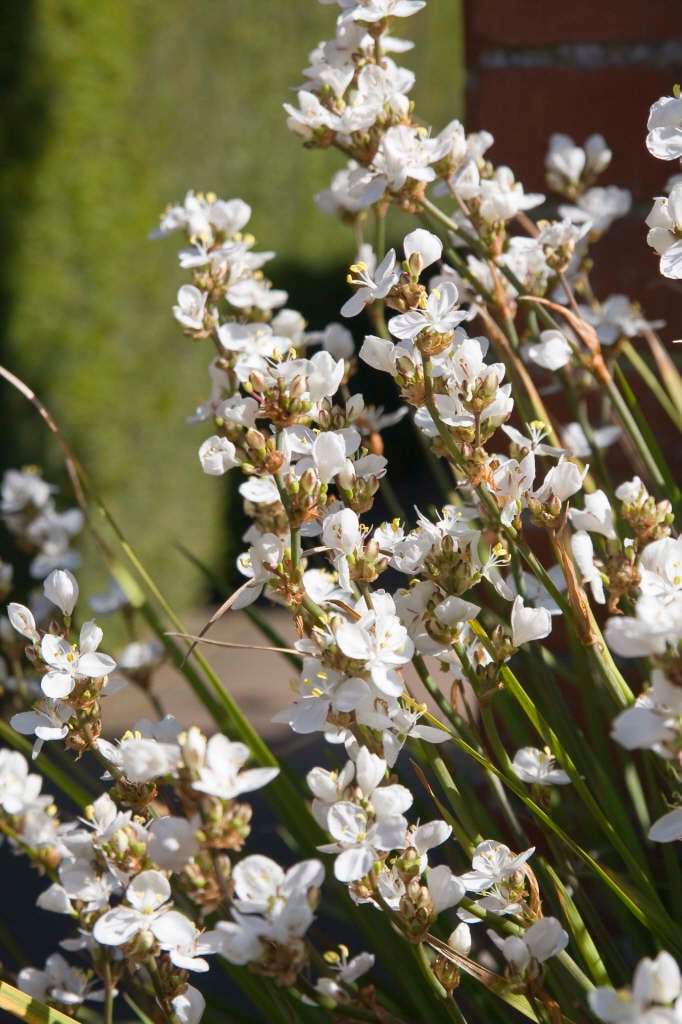Libertia chilensis Formosa Group
New Zealand satin flower Formosa Group
A robust evergreen plant forming a mass of narrowly sword-shaped, leathery leaves; bowl-shaped white flowers 3cm wide are borne in clusters on stiff stems in late spring and early summer
Size
Ultimate height
0.5–1 metresTime to ultimate height
2–5 yearsUltimate spread
0.5–1 metresGrowing conditions
Moisture
Moist but well–drainedpH
Acid, Alkaline, NeutralColour & scent
| Stem | Flower | Foliage | Fruit | |
| Spring | White | Green | ||
|---|---|---|---|---|
| Summer | White | Green | ||
| Autumn | Green | |||
| Winter | Green |
Position
- Full sun
Aspect
South–facing or West–facing
Exposure
Sheltered Hardiness
H3Botanical details
- Family
- Iridaceae
- Native to GB / Ireland
- No
- Foliage
- Evergreen
- Habit
- Bushy
- Genus
Libertia are clump-forming perennials with grass-like, evergreen leaves and panicles of saucer-shaped white or blue flowers, followed by orange seed capsules
- Name status
Accepted
How to grow
Cultivation
Grow in moderately fertile, moist but well drained soil in full sun. The foliage may be damaged in harsh winters
Propagation
Propagate by seed; sow seeds in containers outdoors as soon as ripe. Divide in spring
Suggested planting locations and garden types
- Coastal
- City and courtyard gardens
- Cottage and informal garden
- Flower borders and beds
- Underplanting of roses and shrubs
Pruning
Remove flower stalks after flowering. Trim back damaged foliage in spring
Pests
Generally pest-free
Diseases
Generally disease-free
Get involved
The Royal Horticultural Society is the UK’s leading gardening charity. We aim to enrich everyone’s life through plants, and make the UK a greener and more beautiful place.
